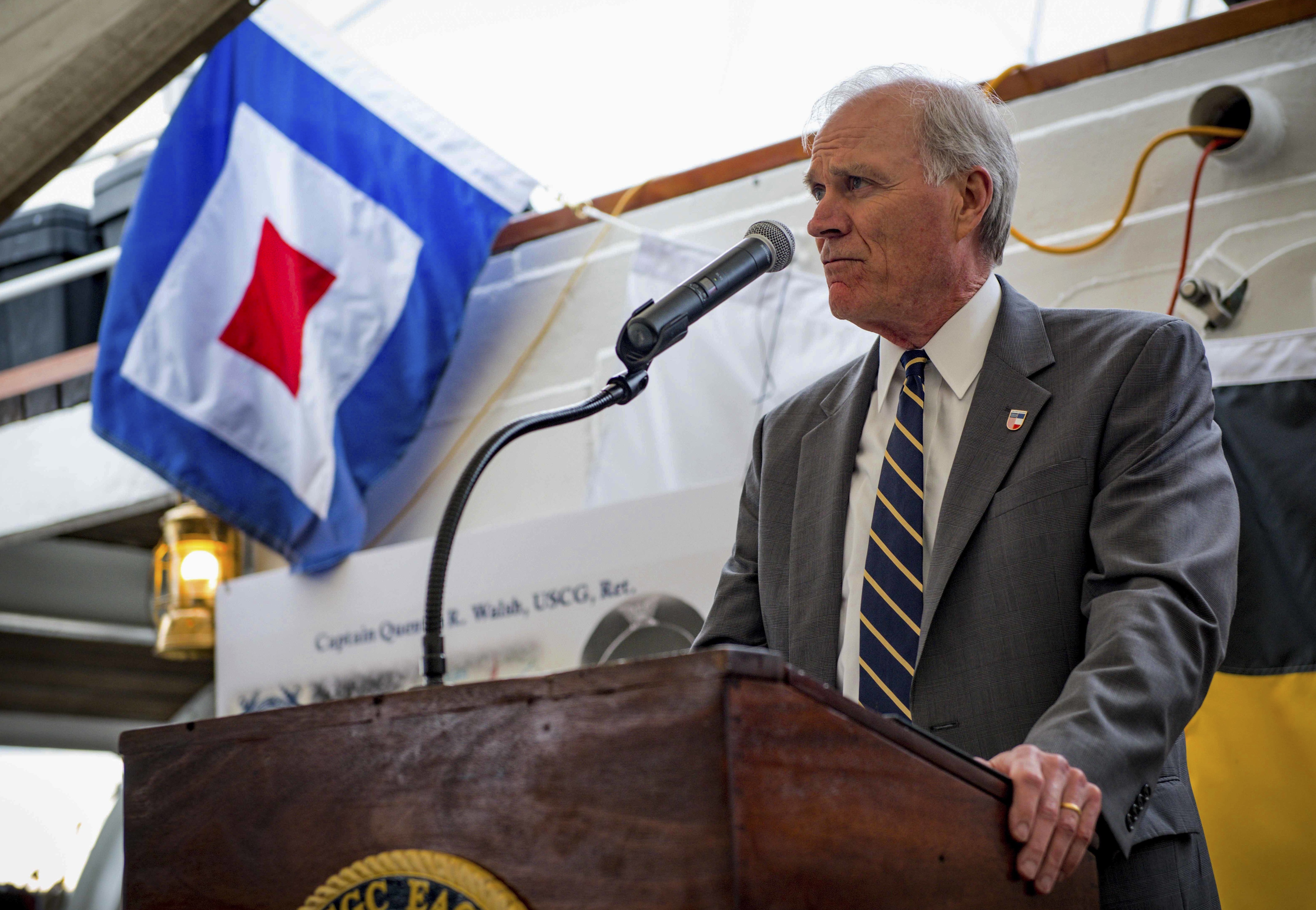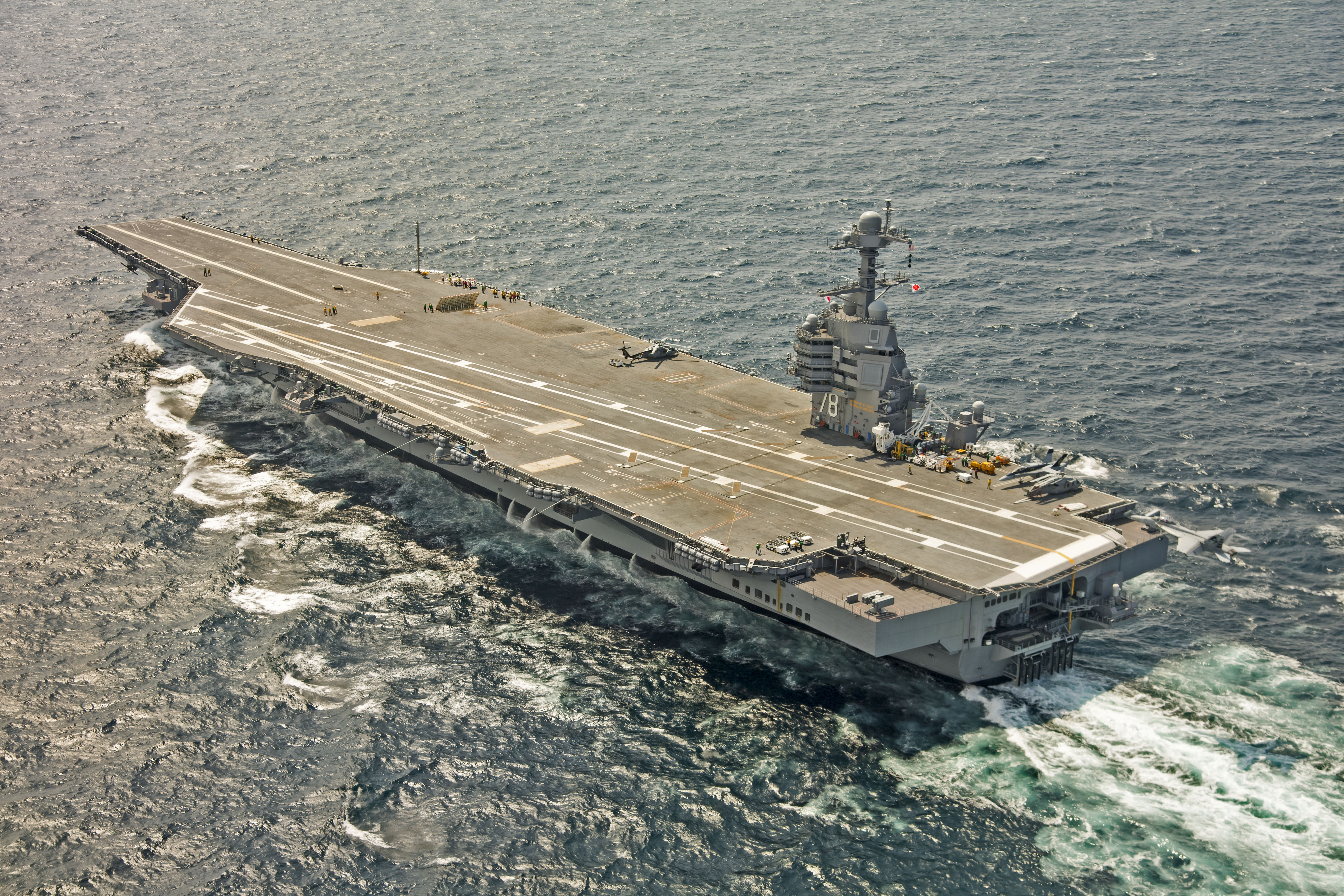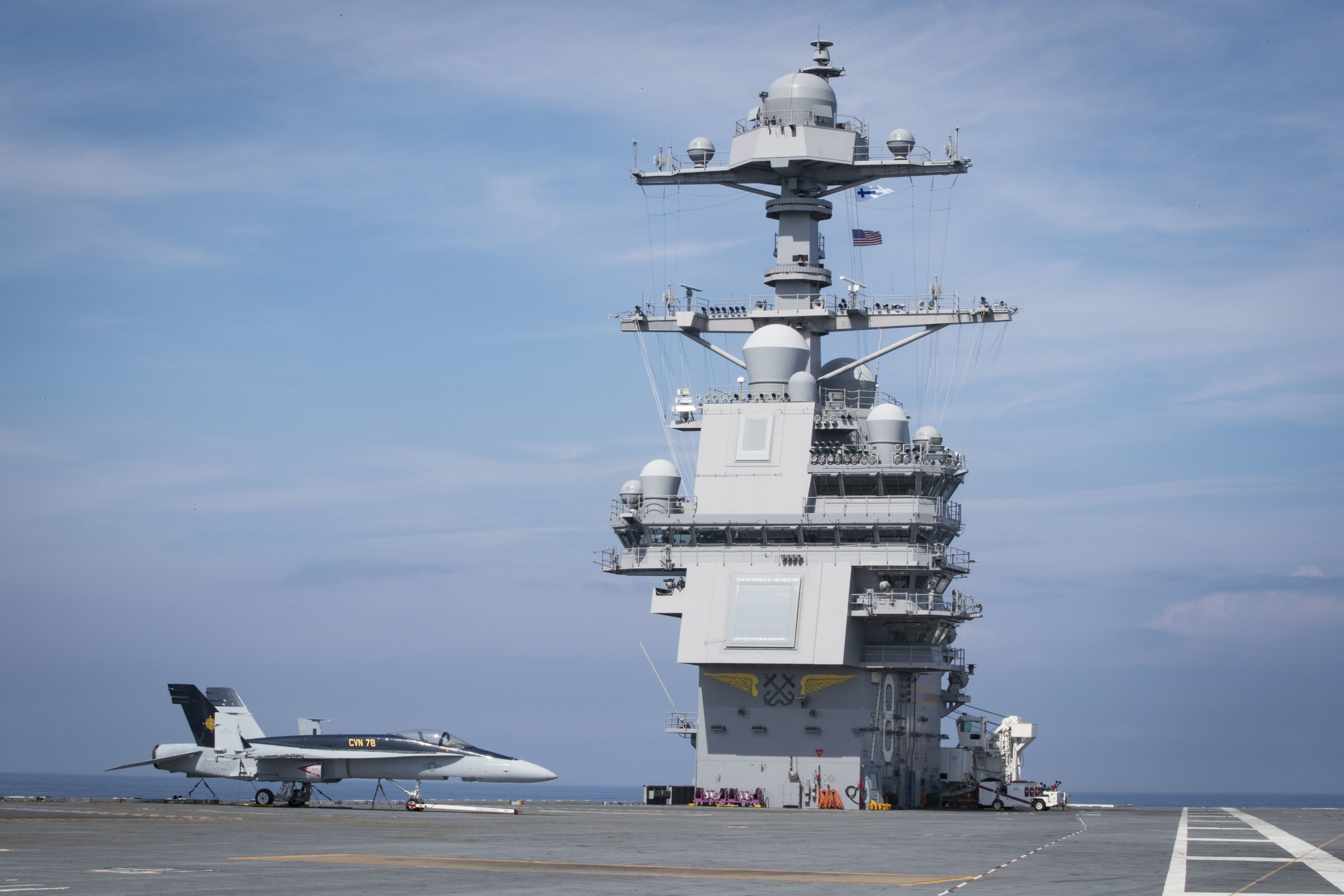
This post was updated to include a statement from Rep. Elaine Luria (D-Va.)
WASHINGTON, D.C. — Congress needs to consider its own culpability before criticizing the Navy for the slow pace of prepping USS Gerald R. Ford (CVN-78) for deployment, Secretary of the Navy Richard V. Spencer said on Wednesday.
Spencer called out Congress, who he refers to as his “board of directors,” and Ford’s builder for sharing blame in the delays but avoiding acknowledging their role. Spencer, speaking Wednesday at the Brookings Institution, was reacting to comments made Tuesday by Rep. Elaine Luria (D-Va.) referring to Ford as a “$13-billion nuclear-powered floating berthing barge” during a House Armed Services readiness subcommittee hearing.
“Not one of her comments was, how can I help?” Spencer said. “I consider that disparaging. If she wants to get on board and help, we have open arms. We need everyone to realize that these are massively complex systems.”
During the hearing Spencer referenced, Luria, a retired nuclear-trained surface warfare officer and U.S. Naval Academy graduate, asked Naval Sea Systems Command head Vice Adm. Tom Moore for updates on delays getting Ford ready for a deployment that is now expected to occur in 2024, with initial operational capability likely to be declared no later than 2022, Spencer said. Ford was initially expected to deploy in 2018.

“I listened to Rep. Luria yesterday question my head of acquisitions and the head my maintenance, Adm. Moore. And I look to her and other leadership on the Hill that continually disparage the Ford as a program, and I get a little upset,” Spencer said. “And then I go, ‘Wow Richard, think of the positive here: you could not ask for leaders in Congress who make disparaging comments against a platform we’re developing with new technology, you could not ask for a better disinformation program for our competitors.’”
Luria provided USNI News with the following statement, “I find it disappointing that the Secretary finds Congressional oversight disparaging. Here are the facts: The USS Ford will be six years delayed in its initial deployment, which causes incredible strain on the carrier fleet. Secretary Spencer himself promised the President that the weapons elevators would be fully functional by the end of this past summer. It is now fall and no elevators accessing the ammunition storage areas are functioning, which results in a carrier with no combat capability. I have yet to see a detailed plan to fix the multitude of problems with these new technologies. The Navy accepted the design of these systems and accepted the ship in an incomplete state from HII so it is absolutely my role to question Navy leadership on their current failure to deliver an operational ship to the fleet.”
The Ford program has had setbacks and delays, and Spencer said the Navy is not blameless. However, Congress is the body frequently failing to approve military spending on time, Spencer said.
The result is maintenance and acquisitions are often delayed because his department is forced to operate under a continuing resolution, which caps spending to the previous year’s levels and limits the department’s ability to award new contracts. In 2017, Spencer said the Navy created a study to quantify the cost of these CRs.
“That cost in dollars was $4 billion. $4 billion,” Spencer said. “So, when I get accused of a cost overrun on the Ford by my board of directors and they go and burn $4 billion, I’m confused as to who is responsible for wasting or dibbling with resources. It’s an atrocity that a CR exists. It’s an atrocity, I think, that they go home on a vacation, or a recess, excuse me, and don’t do the business that has to be done at hand. We’re still working here. Our uniformed members and civilian teammates are still out, standing the watch. Why can’t they?”
Speaking specifically about Ford, Spencer added it was Congress that placed a price cap on the carrier’s construction. The result, Spencer said, was that contractors made production decisions focused on saving money. The weapons elevators, for instance, were installed without Huntington Ingalls Industries’ Newport News Shipbuilding building a land-based test model, Spencer said.
“And I love the fact that, and I’m going to be very aggressive here, that Congress turns around and says, Navy, this is your fault,” Spencer said. “I have an extra seat up there when I testify, and I have not seen Huntington Ingalls’ Newport News called up on the Hill to testify on the outrage that my board of directors sees on the Ford.”

“Spring of this year HII management says ‘oops, it’s going to be 2020; we don’t really have any idea what we’re doing,’” Spencer said. “Little change in plan. Totally realize it.”
The advanced weapons elevators, AWEs, are one of five significant design advances on Ford. Challenges getting the 11 AWEs to work properly are one of the primary engineering issues preventing the Navy from declaring Ford ready to deploy. Ford’s post-shakedown availability was extended to October as the Navy and the shipbuilder tried getting as many of the 11 AWEs operational.
Spencer previously vowed all AWEs would be operational when Ford left its PSA. Now the Navy has taken over the program, Spencer said progress is being made with getting the weapons elevators operational. The fourth elevator was certified Wednesday morning, Spencer said, just before he appeared at Brookings. Elevators five, six and seven are moving but need a little more time before being certified.
“So, we’re making progress once we got a Navy team down there taking over this project,” Spencer said. “Faith and confidence with HII senior management when it comes to this project is very, very low.”
Huntington Ingalls Industries provided USNI News with the following statement after Spencer’s appearance at Brookings.
“USS Gerald R. Ford is a first-in-class ship, and with that come many unique challenges. We have been working closely with the Navy to resolve those challenges. It is important to note that the evolution of many of the new technologies on Ford were originally to be implemented over the first three ships of the class. That plan was changed in 2002, when a decision was made to install all of the new technology on the first ship. We are proud of the work that our shipbuilders have accomplished. Most things have gone very well. Some of the newer technologies have been more challenging than anticipated. This is to be expected on any first-in-class ship. We will continue to support our Navy partner in their preparations for the ship’s deployment and we’re confident that Ford will bring great capability to the Navy and to our Nation for decades to come,” the statement said.
“If you talk to HII, they’ll tell you it’s a trail of tears,” Spencer said. “Well, you know what, we have to get the thing off the pier and out to sea.”





